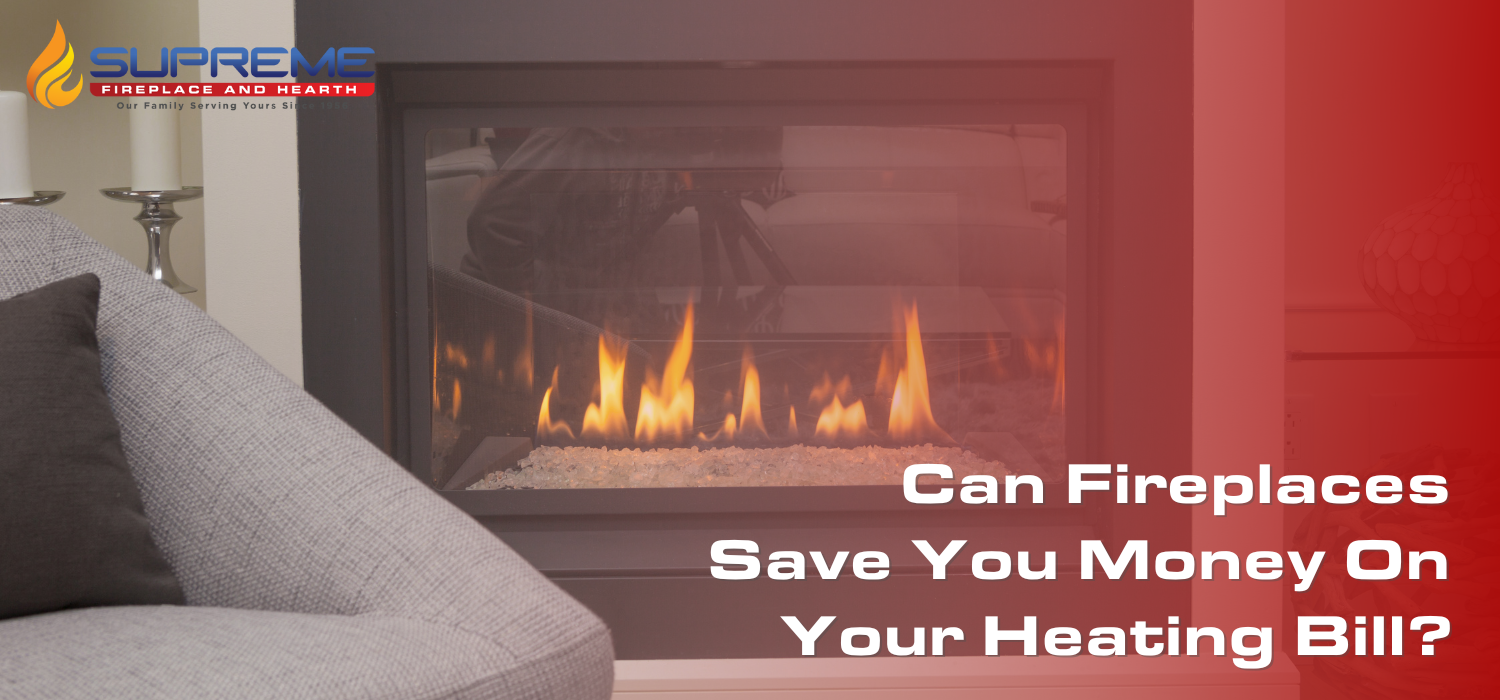As winter approaches, you’re probably thinking about the best way to heat your home without it costing an arm and a leg. Installing a fireplace to use intermittently with your furnace can save you money.
So, does using a fireplace save money? Below, we outline the three main fireplace types, the pros and cons of using each as a heating source, and which is the best money-saving option.
Wood Burning Fireplaces
There’s no denying that wood burning fireplaces have a certain charm that other fireplace options don’t. However, they’re probably not the best option if energy-efficiency is your main goal. Did you know that up to 80-90 percent of the heat generated by a wood-burning fireplace is lost through the chimney?
However, one major advantage of a wood fireplace is that it adds the most value to your home. This is because it’s a focal point of a room, and makes for a perfect family setting.
The bottom line: While a wood burning fireplace isn’t the best money-saving option, it’s a traditional heating source that’s sure to give your home a warm and cozy feel.
Gas Fireplaces
You’ll have more control over your heat output with a gas fireplace insert. Since it’s sealed, and you can control when it’s on and for how long, you won’t waste any heat.
Some inserts even allow you to control the temperature—this way, you can easily adjust the temperature of your space until it’s just the way you want it.
Figure out which rooms you use most, and consider installing fireplace inserts in those rooms. Then, you can lower your thermostat and stay cozy in your favorite parts of the house.
Another advantage is that gas fireplace inserts don’t need electricity. So, if you ever lose power, you’ll still have heat and a source of light.
The bottom line: Does using a gas fireplace save money? Gas fireplaces are a great option, because they don’t waste heat or use up electricity. However, if natural gas prices are high in your area, neither option will save money on energy costs.
Electric Fireplaces
Electric fireplaces are the most energy-efficient, making it the best fireplace option to save you some money. They work by drawing cool air in, heating it internally via coils, and blowing the warm air back out. Since electric fireplaces aren’t connected to the outdoors, they lose less heat than a wood burning fireplace.
This type of fireplace also provides supplemental zone heating—a type of heating and cooling system that uses ductwork to regulate and redirect air to specific areas of your house. By doing so, you’ll save money and be able to lower the overall temperature of your home by 10-15 degrees.
This way, you heat only the room that’s occupied. This can reduce large amounts of wasted energy and save you money on your energy bill.
However, it shouldn’t be used as your main source of heat. When properly rotated with the use of a furnace, electric fireplaces can help you reduce your monthly heating bills by up to 50%.
The bottom line: Electric fireplaces waste practically no heat, and can be used to heat specific areas of your home. With proper usage alongside your furnace, this is the fireplace that can save you the most on your energy bills.
Let Us Help You Find Your Best Fireplace Option
Even though fireplaces can’t be used as a primary source of heat (unlike a furnace), they can cut on your energy costs when used properly. If your main concern with your fireplace is to save money, our recommendation is an electric fireplace.
However, there are many advantages to a fireplace—no matter which model you choose. Contact Supreme Fireplace & Hearth for a consultation today! We can help determine which model one is right for you and your home.

